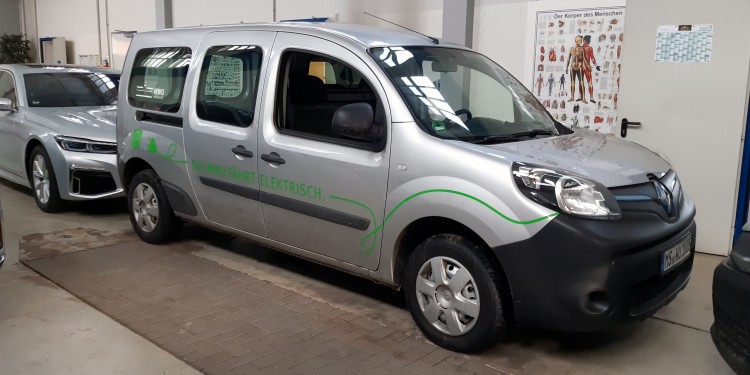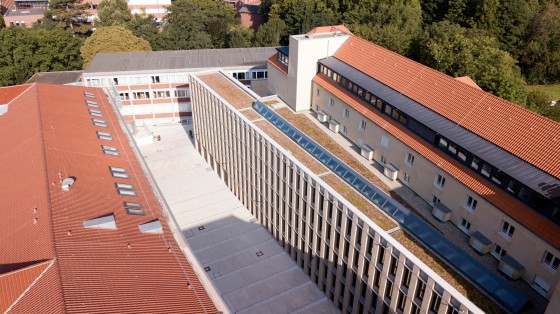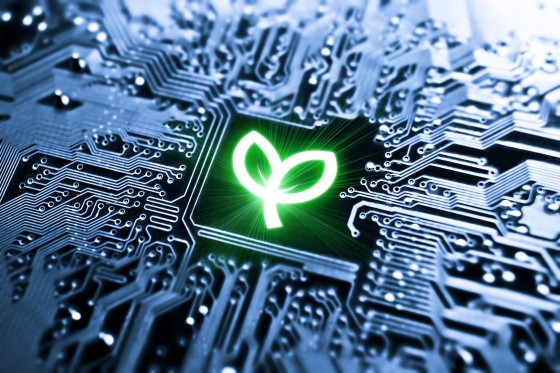
Saving resources and protecting the environment
Münster University has around 45,000 students and 7,250 staff, making it one of the largest German universities. Münster is committed to the idea of sustainability – in many areas. These include for example the administration, building work and information technology. These guest commentaries give an insight into everyday work at the University.
Many individual measures produce more sustainability in the administration
Sustainability plays a major role in the administration. Among other things, the Central Services department focuses on the use of recycled paper and electric cars for business trips and transportation purposes. Every year, the department orders more than ten million sheets of paper, including photocopier paper, and the proportion of recycled paper ordered is constantly increasing, which contributes to a more environment-friendly use.
Also, the University currently possesses five electric cars and several hybrid vehicles, which are used for example for business trips undertaken by members of the Rectorate or for journeys transporting mail and other things between individual buildings in the city and surroundings. To keep emissions as low as possible when staff are travelling, we are adding more and more electric vehicles to the University’s fleet, which currently consists of 30 cars and vans. In 2020 alone, around 25,500 kilometres were driven in electric vehicles – despite the fact that there was a big drop in the number of business trips because of the corona pandemic.
There are numerous other examples of how we demonstrate our sustainability – including the use of electric freight bicycles, which are used instead of cars to transport many objects. In the field of catering in the University administration, we only use Transfair and organic coffee as well as reusable glass bottles. The reuse of used items such as files or folders is also an important component in saving resources in our work. And, of course, waste is separated stringently right across the University.
Author Manfred Kuypers is Head of Department 2, “Central Services”.
Efficient use of resources, reduced impact on the climate, user-friendly building

There are examples of sustainability both in existing buildings and in those being planned. The GEO1 building is the most sustainable and most energy-efficient building in the Natural Sciences Centre. The Philosophikum building on Domplatz has intelligent building control technology, covering heating, ventilation, shading and window-opening.
We have commissioned an energy concept for the projects currently at the planning stage for the new IG1 building (Physics) and the GEO1 extension. In doing so, Münster University is following the principle of an efficient use of resources.
In the Hüffer Campus new building project, all the flat roofs are to be greened. Greened roofs have been shown to make a contribution to improving the micro-climate. In addition, greened roofs provide a habitat for fauna and flora and promote biodiversity. Something else deserving of mention is the installation of electrical charging points on the overground and underground levels of multi-storey car parks, as well as the focus on parking spaces for bicycles to underpin our ecological mobility concept.
Author Martina Stemberg is Head of Department 7.1.1., Planning and Building.
IT shouldn’t just be sustainable – it can also reduce environmental problems

The Münster University IT department is conscious of this responsibility. Not without reason does sustainability hold a central place in the department’s mission statement, drawn up jointly by all staff in 2020. And this is lived out in various ways in practice: from the fleet of service bikes and environment-friendly paper for “Print&Pay” to the purchases of large-scale hardware. In the latter case, sustainability is one of the deciding criteria, for example with the high-performance Palma II computer, which, at the time it was bought in 2018, was listed in the Green 500 ranking of particularly energy-efficient supercomputers. Sometimes, however, it is more sustainable to operate a system longer than to purchase a new one. For this reason, we always aim for as long a lifetime as possible for our equipment.
Sustainability – in addition to data security – also plays a role in any decision as to whether we or an external contractor operates a particular service. Amazon’s computer centres, for example, which many commercial suppliers use for their services, are considered to be relatively harmful to the environment as they run on electricity generated almost exclusively in a conventional way. Wherever possible, Münster University operates its services itself – and, in the case of the Cloud storage service “Sciebo”, for 30 other universities too.
Something which the corona pandemic is currently showing very clearly, is not only that IT should be as sustainable as possible, but that it can even help solve environmental problems. Significant quantities of CO2 are being saved because mobility has been reduced as a result of people working from home and business trips being replaced by video conferences. Zoom, which provides video-conferencing facilities – which we too use at Münster University – has calculated that in 2020 its customers saved more than 45 million tonnes of CO2.
Author Dr. Dominik Rudolph is Deputy Head and Administrative Director of Münster University IT.
